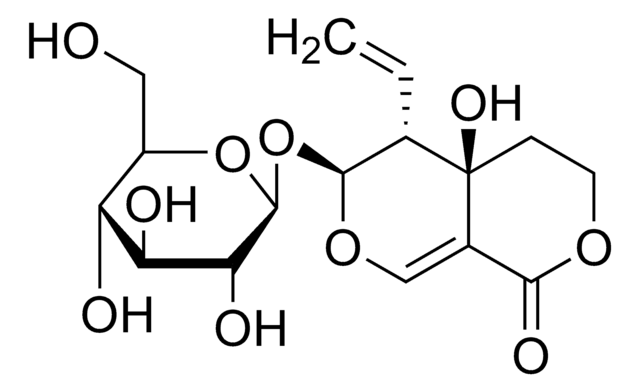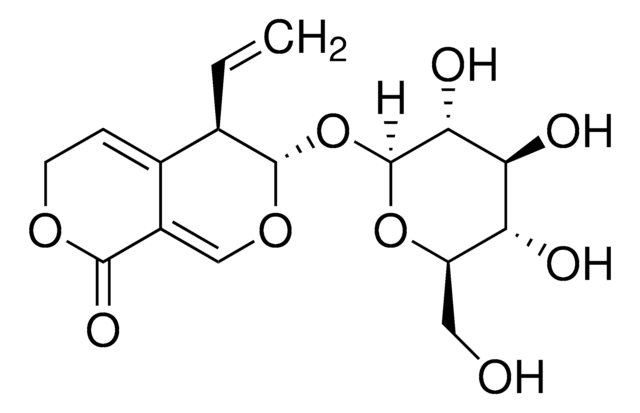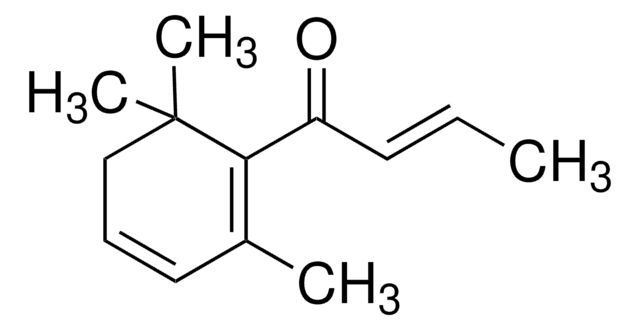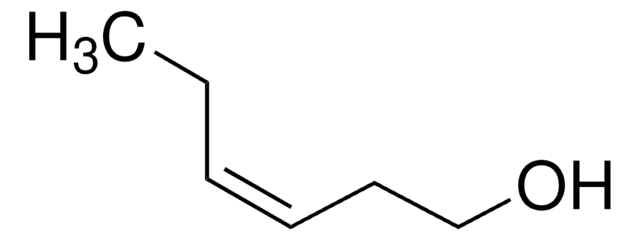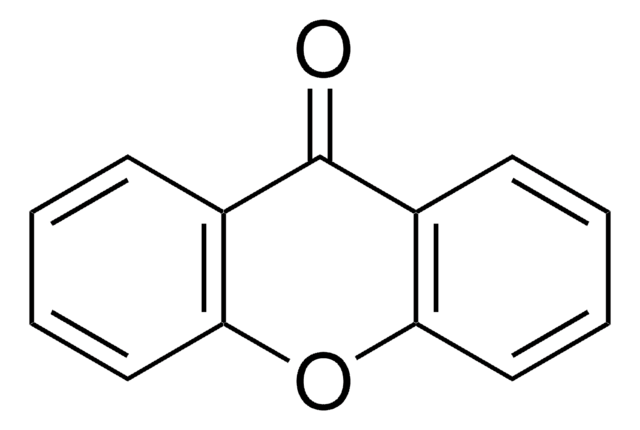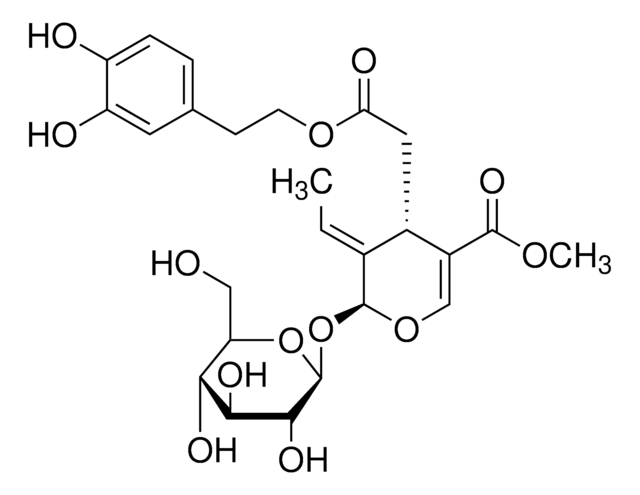M3547
Mangiferin Mangifera indica
Synonym(e):
1,3,6,7-Tetrahydroxyxanthone C2-β-D-glucoside
About This Item
Assay
≥98% (TLC)
Form
powder
Anwendung(en)
metabolomics
vitamins, nutraceuticals, and natural products
SMILES String
OC[C@H]1O[C@H]([C@H](O)[C@@H](O)[C@@H]1O)c2c(O)cc3Oc4cc(O)c(O)cc4C(=O)c3c2O
InChI
1S/C19H18O11/c20-4-11-15(25)17(27)18(28)19(30-11)12-8(23)3-10-13(16(12)26)14(24)5-1-6(21)7(22)2-9(5)29-10/h1-3,11,15,17-23,25-28H,4H2/t11-,15-,17+,18-,19+/m1/s1
InChIKey
AEDDIBAIWPIIBD-ZJKJAXBQSA-N
Allgemeine Beschreibung
Anwendung
- as a reference standard for the characterization of mangiferin from Mangifera indica using ultrasound with three-phase partitioning (UTPP)
- to study its effects in promoting brown adipose phenotype murine C3H10T1/2 mesenchymal stem cells (MSCs) and its role in mitochondrial biogenesis and homeostasis
- as a reference standard for the quantitative determination of markers compounds in the culture Swertia paniculata shoot culture using high-performance thin-layer chromatography (HPTLC)
Biochem./physiol. Wirkung
Signalwort
Danger
H-Sätze
Gefahreneinstufungen
Acute Tox. 1 Oral
Lagerklassenschlüssel
6.1A - Combustible acute toxic Cat. 1 and 2 / very toxic hazardous materials
WGK
WGK 3
Flammpunkt (°F)
Not applicable
Flammpunkt (°C)
Not applicable
Persönliche Schutzausrüstung
Eyeshields, Faceshields, Gloves, type P3 (EN 143) respirator cartridges
Analysenzertifikate (COA)
Suchen Sie nach Analysenzertifikate (COA), indem Sie die Lot-/Chargennummer des Produkts eingeben. Lot- und Chargennummern sind auf dem Produktetikett hinter den Wörtern ‘Lot’ oder ‘Batch’ (Lot oder Charge) zu finden.
Besitzen Sie dieses Produkt bereits?
In der Dokumentenbibliothek finden Sie die Dokumentation zu den Produkten, die Sie kürzlich erworben haben.
Kunden haben sich ebenfalls angesehen
Unser Team von Wissenschaftlern verfügt über Erfahrung in allen Forschungsbereichen einschließlich Life Science, Materialwissenschaften, chemischer Synthese, Chromatographie, Analytik und vielen mehr..
Setzen Sie sich mit dem technischen Dienst in Verbindung.
